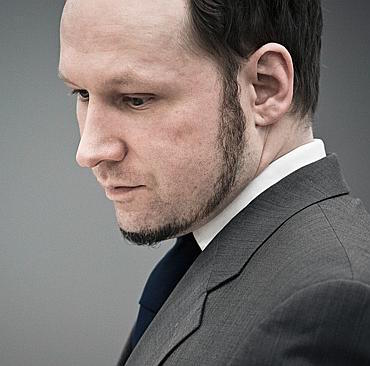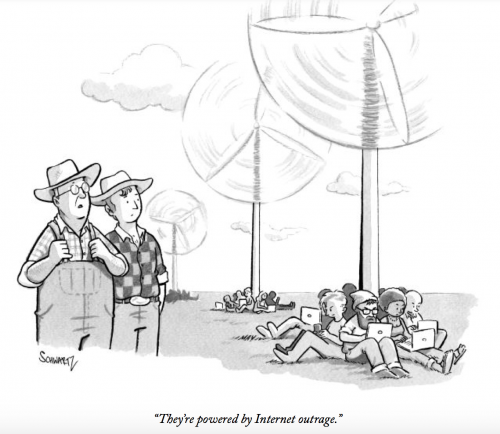
By way of follow-up to yesterday’s post on the problems facing boys, if you haven’t bookmarked Karl Ove Knausgaard’s essay about mass murderer Anders Breivik in last week’s New Yorker, run don’t walk. It may not be beach reading exactly, but nothing’s more edifying than when a great writer tackles a subject that’s worthy of him/her, of which this represents a prime example. The depth of reflection is truly impressive, as is how strenuously Knausgaard works to avoid the word “evil”. But for our purposes, the Norwegian master explores at some length the ‘distancing from self’–or disembodiment–that modern life makes possible, and the stunting effect this can have on our ability to empathize with and/or love other people. Of course, Breivik is too extreme an example to be of much use in any discussion about gender. (Suffice it to say, when The New Yorker attempted to report on the unsung history of female serial killers the other day, it was pretty feeble stuff). But as a vision of self-deification, and what it takes to override all sense of imago dei, Knausgaard paints a chilling picture:
A few months before Breivik carried out the assault, he visited his former stepmother and told her that soon he was going to do something that would make his father proud. His mother had left his father when he was one, and it had been years since Breivik had spoken to him.
He wanted to be seen; that is what drove him, nothing else…
Until his moment of decision, Breivik appears to have been an ordinary person, the kind you might meet anywhere. He had a difficult upbringing, to be sure, but that is more common than one might think; he had yet to find his place in life, he was not who he wanted to be, but that is also a relatively common experience. His great inner conflicts were something that he kept secret, even from himself. It was only when he carried out a terrorist attack that he stood out. When I read about him, I can follow him up to that point, my empathy stretches that far, but it goes no further.
What does it take to kill another person? Or, to put it another way, what is it that prevents us from killing?…
Society has protective systems in place that should make Breivik’s actions, and the actions of those who mow down their fellow-students, impossible. I am not thinking of child protective services or of schools or of any civic authority, not even the police; rather, I am thinking of the bonds among people, the presence of the other in ourselves, and the responsiveness around which every community and culture is built, which reveals itself in the commandment we see in the faces of others: do not kill…
Killing another person requires a tremendous amount of distance, and the space that makes such distance possible has appeared in the midst of our culture. It has appeared among us, and it exists here, now. The most powerful human forces are found in the meeting of the face and the gaze. Only there do we exist for one another. In the gaze of the other, we become, and in our own gaze others become. It is there, too, that we can be destroyed. Being unseen is devastating, and so is not seeing.
Breivik remained unseen, and it destroyed him. He then looked down, and he hid his gaze and his face, thereby destroying the other inside him. Five years before the massacre, Breivik isolated himself in a room at his mother’s flat; he saw practically no one, refused visits, hardly ever went out, and just sat inside playing computer games, World of Warcraft mostly, hour after hour, day after day, week after week, month after month. At some point, this fantasy took over Breivik’s reality, not because he experienced a psychotic break but because he discovered models of reality that were as uncomplicated and manageable as those of the game, and so, incited by the power of his fantasies, especially by what they enabled him to become—a knight, a commander, a hero—he decided to bring them to life. He had been a nobody—that is to say, dead—and suddenly he arose on the other side, no longer nobody, because, by virtue of undertaking the inconceivable, which was now conceivable, he would become somebody.
Only an individual self can feel for another, and Breivik no longer possesses that self; it is dead. His identity, carefully constructed, replete with a new body, a new psyche, desensitized and ruthless, is a soldier’s identity, a hero’s identity, and that conflicts with everything that he was; indeed, combats it. It is as if he had personified an image and transformed it into something seemingly absolute, into flesh and blood, but the actual absolute, the young peoples’ bodies, he has converted to images, pixels, digits.

COMMENTS
2 responses to “Anders Breivik and the Commandment We See in the Faces of Others”
Leave a Reply















This idea of being seen and unseen reminds me of the lament of the first murderer, Cain, “My punishment is greater than I can bear…I shall be hidden from your face.” Cain knew what Knausgaard alludes to — in God’s gaze, we exist; outside it, we are annihilated. Fortunately, though it seems humans can ignore the commandment we see in the face of others and in so doing destroy their humanity and the humanity of others, God never stops ‘giving us countenance’. Even Cain.
Great point, drawing together empathy, attention, acceptance, etc.
Thanks